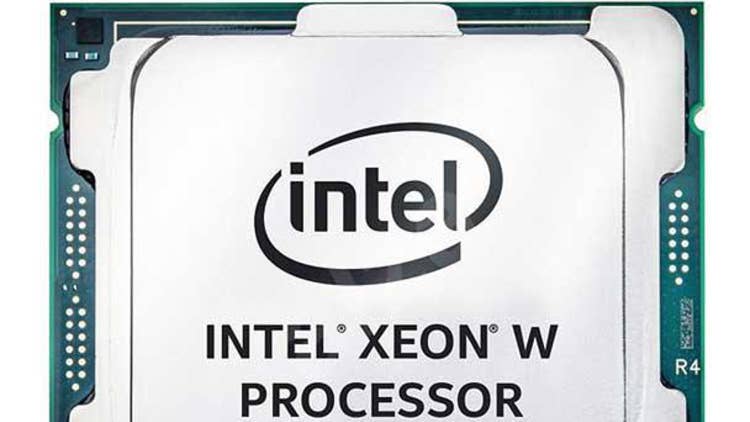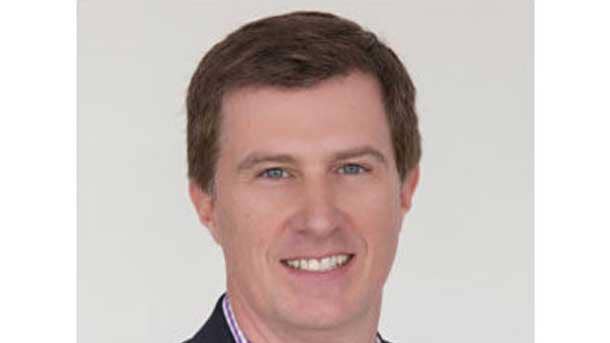Intel’s Gelsinger: AMD’s Lead ‘Over’ With New Alder Lake, Sapphire Rapids CPUs
In an exclusive interview with CRN, Intel CEO Pat Gelsinger talks about how the upcoming Alder Lake and Sapphire Rapids CPUs will put the heat on AMD, his view of Arm’s emergence in the data center and the importance of channel partners to Intel’s future.

Setting A ‘Torrid Pace’ To Reclaim The Title Of ‘Unquestioned Leader’
When it comes to Pat Gelsinger’s return to Intel and what it means for the chipmaker’s future, the 30-year company veteran sees a common thread with Steve Jobs’ journey back to Apple and how that ushered in a new golden era for the tech giant.
This comes down to the fact that Gelsinger left Intel in 2009 and spent 11 years working at other companies, EMC and VMware in his case, before heeding the call back home.
[Related: Why Pat Gelsinger Decided To Wind Down Intel’s RealSense Unit: Exclusive]
“Steve Jobs had an 11-year vacation from Apple. I had an 11-year vacation as well. And in it, I learned a lot of things,” he said in an exclusive interview for CRN’s October cover story.
Now that he’s CEO of Intel, Gelsinger said he’s setting a “torrid pace” to make the company the “unquestioned leader” in every product category it competes in. Even with the new Alder Lake client CPUs that launch this fall and the Sapphire Rapids server CPUs coming next year, Gelsinger said the days of rival AMD claiming CPU dominance are coming to an end.
“AMD has done a solid job over the last couple of years. We won’t dismiss them of the good work that they’ve done, but that’s over with Alder Lake and Sapphire Rapids,” he said.
Gelsinger is also not fazed by Apple weaning its reliance on Intel CPUs in favor of homegrown chips that are powered by British chip designer Arm.
“We ultimately see the real competition to enable the ecosystem to compete with Apple,” he said.
For Intel to be successful, Gelsinger said the company will need to work closely with channel partners who create solutions based on the chipmaker’s components.
“Either directly or indirectly, it’s pretty important how we work with, partner with and support our channel partners, because that’s fundamentally how we get our technologies to market,” he said.
In his exclusive interview with CRN, Gelsinger talked about how the upcoming Alder Lake and Sapphire Rapids CPUs will put the heat on AMD, his view of Arm’s emergence in the data center and the importance of channel partners to Intel’s future.

Let’s talk about CPUs. AMD’s x86 CPU market share has grown over the last few years, increasing 4.2 points year-over-year to 22.5 percent overall in the second quarter, according to Mercury Research. At the same time, Arm’s silicon partners like Apple, Qualcomm, Amazon Web Services and Ampere Computing are ramping up efforts in client computing and data center. What is Intel doing to defend its position in the CPU market for PCs and servers?
Do better products. It really just comes down to, if the products are better, we’ll do better. So what do I tell my teams every day? Do better products. Unquestioned leadership. Execute, execute, execute. Improve the quality experience. Improve how we support our customers. Engage them more deeply in that. And to me, that is the higher order bit.
Now, when you click to the next level, there’s a lot of things going on. Overall, it’s a supply-constrained market. As I said in the last earnings call, I see a period of reasonable [market share] and [average selling price] stability going forward, because its capacity limited at that point, and neither [Intel or AMD], if I can’t do a whole lot more, neither one is motivated to go try to steal a lot of share from the other and take price actions and so on, so it’s going be a period of relative stability as the products get better.
Though we will get more competitive as our products get better. We’re on a roadmap to do that, where Alder Lake, [the next generation of client CPUs], comes out soon. We’re ramping well today’s [client CPU] products. Sapphire Rapids, [the next generation of Xeon Scalable CPUs], launches early next year. Ice Lake, [the current Xeon Scalable generation], is ramping well. So one-by-one, every product is getting better, and we’re just putting a lot of emphasis on getting them better, supporting our customers and ramping with them, etc.
Obviously as we [improve] our manufacturing machine or process technologies, that helps us get better. With that and particularly with the Sapphire Rapids generation, key new technologies [will be introduced] —DDR5, CXL, PCIe Gen 5 — [showing] that we’re getting back to the platform leadership role that you’ve come to expect from Intel, where we define the platform for the industry. It’s open, but we become the reference design, and everybody starts building on those new innovations, so [it’s a] major new platform launch.
And when you think about the data center space, the role of Arm is very minimal today, and us getting our act together, I think it stays that way. I just don’t see that people want to go through all that hard, heavy lifting of changing the software environment for another architecture if there [aren’t] major [total cost of ownership] advantages on the table — and there [aren’t] if we’ve done our job well in that respect.
When you flip over to the PC side, we’re very happy with [what we presented at Intel] Architecture Day, bringing our hybrid solutions, where we have performance leadership and energy efficiency leadership with Alder Lake. We think that’s a game changer because we’re going to be able to compete on both dimensions where [AMD] is not.
We ultimately see the real competition to enable the ecosystem to compete with Apple. I was on the phone with [Microsoft CEO] Satya [Nadella recently]. “I’m finishing my exit from the Apple closed garden. I’m now on the open ecosystem of Windows and Android, and we’re making that happen.” But our experience has to be better. So that’s ultimately the tablet experience, the phone experience, the peripherals, the PC: They have to have a better experience, supported by a broad ecosystem of innovation. So that’s how we see that space, and ultimately Arm has won the mobile category. We’re now trying to draw our lines successively lower as we go deeper into the tablet and education space as opposed to that [Arm] ecosystem growing up.

Do you expect Sapphire Rapids, the next generation of Xeon Scalable CPUs, to slow down AMD’s market share growth in the data center space when it comes out next year?
I think we’re in a supply-constrained environment, so in that view, I don’t think there’s a lot more opportunity for share movements one way or the other in this period of time. I see it as a fairly stable environment in terms of market share and ASPs in that environment.
And if anything, ASPs are rising, not falling because of supply constraints and the costs of the supply chain coming at us and at [AMD] in this period of time. In that sense, I just don’t see a lot of change on market share, which in some respects, as our products are rebuilding strength, we’ll be in an environment where as the products get better as they ramp, and as we look out [two to] three years, we expect unquestioned leadership products in every dimension that we participate in.
So this period of time when people could say, “Hey, [AMD] is leading,” that’s over. We are back with a very defined view of what it requires to be leadership in every dimension: leadership product, leadership [chip] packaging, leadership process, leadership software, unquestioned leadership on critical new workloads like AI, graphics, media, power-performance, enabling again the ecosystem. This is what we will be doing with aggressive actions and programs over the next couple of years.
With the competition stronger than ever before, what are the reasons partners should continue to point customers to Intel-based solutions?
There are probably three or four answers to that matter. One is, we have 80-ish percent share. We’re not 80-ish percent share because we don’t satisfy the customers and satisfy the market and enable the partners as well. And yeah, AMD has done a solid job over the last couple of years. We won’t dismiss them of the good work that they’ve done, but that’s over with Alder Lake and Sapphire Rapids.
We have the best product. We have 80 percent market share. We have the best software assets that are available in the industry. We do the best job supporting our partners and our OEMs with it. We have an incredible brand that our channel partners, customers want and trust. Wow, that’s a lot of assets in that. If the channel partner doesn’t see value in that, I want to talk to him.
Intel is back. These are the best products in their category. We have the best supply situation. We have the best quality software assets. The most respected, venerable technology brand in the industry. Yeah, that’s what your channel readers need to be delivering to their customers.

How important are channel partners to the future of Intel?
You’re clearly not the most important thing. I got to build fabs and great products, but after that, you’re pretty high up on the list in that sense. And whether it’s direct or indirect in the sense that, hey, Dell is our biggest customer, but Dell sells almost everything they do through the channel. So either directly or indirectly, yeah, it’s pretty important how we work with, partner with and support our channel partners, because that’s fundamentally how we get our technologies to market.
We also see, as markets are being created, the role of the channel partners is very high in helping to create the solutions. And then as the market starts to get established, that creation phase dissipates and the distribution and the enablement phase emerges more, and you see that over and over again in different markets. And I do think that we’re going into a phase of significant new market creation. As we think about these edge use cases and 5G use cases and all the things that are occurring as the digitization of everything occurs, I think we’re coming into a phase that there will unquestionably be shifts in who’s playing what [role] and which channel partners step into that, but I do think it’s going to be a very vibrant time for innovation through and with the channel partners.
Intel’s U.S. channel chief, Jason Kimrey (pictured), once told CRN that Intel’s strategy mirror’s Intel’s partner strategy. Do you think that statement still holds true?
I think that’s a very succinct way to describe it, in that sense, so I’d simply say yes to that. I do think that as we’re in this next phase of our journey as a company that there’s also going to be lots of unique opportunities for us to be bringing new innovations to the channel, but also to be listening to the channel and getting their feedback, guidance and inputs.
And in that sense, [there’s] going to be very obviously lots of supply challenges that we collectively [experience]. I was just on the phone [recently] with one of the big channel players, who said, “Pat, just help me understand what’s going on in this supply situation? How long is this going to be? Help me understand.” So I think on some of that, hey, we’re going to bring certain wisdom and insights to what’s going on, but we also then need to listen and gather that feedback with some of these emerging markets as well. And I think if we combine those two and then continue our relentless advocacy for channel partners, making sure their business models remain intact and supported, I think there’s a lot of good things that are going happen over the next few years together.

Jon Kalvin (pictured), Intel’s global channel chief, told me that you have tasked him with accelerating the growth of Intel’s partner ecosystem as part of Intel Partner Alliance. Was Intel’s partner roster not growing fast enough? And why does Intel’s partner ecosystem need to be growing faster?
I’d say overall, as I came back to the company, I was dismayed a bit that we simply had lost that lean-forward mentality and that we’re going to be delivering leadership products, we’re going to be defining categories, we’re going to be creating new standards and interfaces. So all that’s leaning forward in an effort generally described as, “We’re ready to get the mojo back,” in that respect.
And if we’re going to do that, we have to grow the partners. Some of those as you say will be [independent software providers]. Some of those will be SaaS providers as well. Some of those will be — by the way, many of those skills need to become part of our channel partners’ repertoires as well, as they increase their cloud and SaaS capabilities and their software capabilities, but the bulk of our business needs to continue to be how do we continue to open new hardware, hardware-software solutions through and with our channel partners. So in that sense, I think we had just become way too complacent, and we will set a more aggressive tone in terms of the activities, having more partners, supporting those partners and laying out some more innovation agendas together with them.
Intel Partner Alliancelaunched in January as the company’s new partner program, which consolidated multiple programs under one umbrella. In your view, how has Intel Partner Alliance been in terms of servicing the needs of partners?
Well, to be very honest with you, I haven’t gotten any good metrics yet. So with [Chief Revenue Officer] Michelle Johnston Holthaus and the partner programs underneath her, this is one of the things we have teed up for one of our next reviews with her, because I haven’t seen [the metrics] yet. Are we hitting the numbers that we thought that we would? What kind of satisfaction scores are we getting through it? I’m a data guy and a very transparent one at that. If I don’t have the data, I can’t give you a good answer.
But as they took me through the program as they launched — obviously I started in February, they gave me a short brief on it, it was already launched before I got here — it felt right in that sense. So I think they’re doing the right things in that regard, and now we’ll see if we’re going fast enough and getting good enough results or we have to tweak it a bit or put more energy behind it.